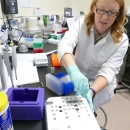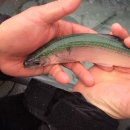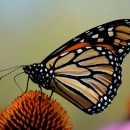The Fish and Wildlife Service developed the Environmental DNA (eDNA): Best Management Practices for Project Planning, Development, and Application document, referred to as the BMP guide. The BMP addresses the need for comprehensive eDNA studies standardization, specifically through the lens of a conservation management agency.
As a collaborative vision and effort, all seven U.S. Service Genetics Labs, including Genetics COP, provided authorship and/or input into this living and evolving document. The BMP will be regularly updated as needed.
We strongly encourage anyone who is new to eDNA and referencing this document, to seek hands-on education and training for eDNA as well. A vast number of options for eDNA training are available, including the Genetics COP annual course, Environmental DNA: Study Design, Implementation, and Application, available through the National Conservation Training Center and open to anyone from any entity.













